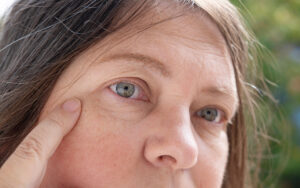The landscape of eye care is undergoing significant transformations, largely driven by advancements in technology and a deeper understanding of eye health. Modern optometry is at the forefront of these changes, introducing innovative methods to diagnose and treat eye conditions more effectively. This article delves into the future of eye care, exploring the integration of new technologies and techniques that promise to revolutionize vision care and patient wellness.
Technological Innovations in Eye Care
Optical Coherence Tomography (OCT)
One of the most groundbreaking advancements in eye care technology is Optical Coherence Tomography (OCT). This non-invasive imaging test uses light waves to create detailed images of the retina, allowing optometrists and ophthalmologists to detect and monitor eye diseases such as diabetic retinopathy and age-related macular degeneration (AMD) with unprecedented precision. The future may see OCT becoming even more refined, with enhancements that could include even higher resolution imaging or integration with artificial intelligence to analyze and interpret complex eye scans more effectively.
Gene Therapy and Advanced Treatment Options
Recent years have seen significant strides in treating conditions that were once considered untreatable. Gene therapy, in particular, has opened new avenues for conditions like Leber congenital amaurosis and retinitis pigmentosa. These therapies work by introducing genetic material into the eye to help correct or replace malfunctioning genes responsible for vision loss. As research progresses, the scope of gene therapy is expected to expand, potentially offering hope for curing various types of hereditary eye conditions.
Robotic-Assisted Surgery and Personalized Eye Care
The integration of robotic technology in eye surgery is enhancing the precision and safety of procedures like cataract surgery and retinal repairs. This technology allows for incredibly precise movements that can be tailored to the unique structure of each patient’s eye, leading to better outcomes and faster recovery times. Personalized eye care is becoming more of a reality with these advancements, as treatments can now be customized to the individual’s specific needs and conditions.
The Role of Telehealth and Remote Monitoring
Expanding Access to Eye Care
Telehealth has become a crucial component in the field of eye care, especially in reaching underserved or remote areas. It enables eye care professionals to provide consultations and follow-up care virtually, reducing the need for patients to travel. Remote monitoring technologies also allow for continuous monitoring of chronic eye conditions, ensuring timely interventions and adjustments in treatment plans, thereby preventing progression and potential vision loss.
Enhancing Continuity of Care
The future of eye care technology holds great promise for enhancing continuity of care. Developments in data sharing and patient management software help maintain detailed records that are accessible to all treating professionals, ensuring that each practitioner is aware of the patient’s history and can make informed decisions regarding their care.
FAQs About Modern Optometry and Eye Health
How does OCT improve diagnosis of eye conditions?
Optical Coherence Tomography (OCT) provides high-resolution images of the retina, which are crucial for diagnosing conditions like AMD and diabetic retinopathy early and accurately. This early diagnosis is vital for effective treatment and preventing severe vision loss.
What are the benefits of robotic-assisted eye surgery?
Robotic-assisted eye surgery offers increased precision, reduced risk of complications, and typically shorter recovery times. This precision is particularly beneficial in delicate procedures such as retinal detachment repair.
Can telehealth replace traditional eye exams?
While telehealth provides significant benefits in terms of accessibility and monitoring, it does not replace the need for periodic in-person exams, which are necessary to assess eye health thoroughly and perform procedures that cannot be done remotely.
Conclusion
As we look to the future, technological advancements and improvements in medical science will transform the field of eye care. From improved diagnostic tools like OCT to revolutionary treatments such as gene therapy and robotic surgeries, the prospects for enhancing eye health and vision care are brighter than ever. For those interested in keeping up with these exciting developments, continue to explore our articles on the latest in eye care technology and health. Each breakthrough not only promises to enhance our ability to treat and manage eye conditions but also improves the overall quality of life for patients worldwide.




